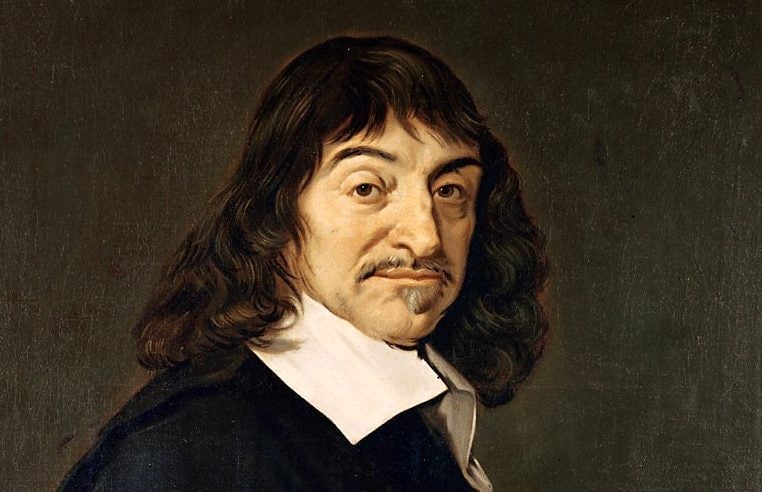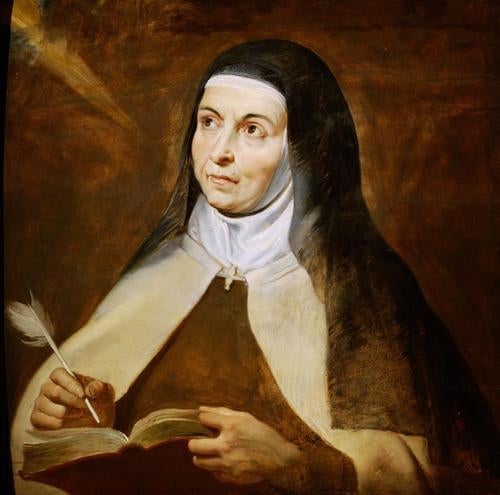One of Descartes’ most famous ideas was first articulated by a woman
The 17th century thinker René Descartes is seen as the father of modern philosophy: A man who was entirely original, whose work marked a clear divide from earlier thinkers, and who laid the foundation for modern thought with his focus on self-knowledge of the individual mind.


The 17th century thinker René Descartes is seen as the father of modern philosophy: A man who was entirely original, whose work marked a clear divide from earlier thinkers, and who laid the foundation for modern thought with his focus on self-knowledge of the individual mind.
But that narrative is “unquestionably false,” says Christia Mercer, a philosophy professor at Columbia University. Indeed, “people in his period did not think Descartes was the father of anything,” she adds. Though the philosopher was renowned in his day for his work on physics and natural philosophy, it wasn’t until the 19th century that historians portrayed Descartes as a major break with the past. This idea has endured in part because, while historians searched for the great male thinkers who might have influenced Descartes’ ideas, they missed the female philosopher who came before him: Teresa of Ávila.
Today, Descartes’ theory of knowledge, set out in his Meditations on First Philosophy, is considered one of the most important works in the Western canon. The ideas laid the groundwork for all his subsequent thinking on self-knowledge, which Descartes is most famous for today. Even those who’ve never read philosophy have likely heard of Descartes’ maxim, “I think, therefore I am.”
But in a paper published in Philosophical Studies last year, Mercer shows how closely the foundational stages of Descartes’ Meditations mirror Teresa of Ávila’s work.
Teresa, a 16th century Roman Catholic nun, was hugely influential and well-regarded in Descartes’ time. She was a prominent Spanish mystic, known for her writings on personal meditation as a path to forming a relationship with God.
The word “mystic,” however, has a broad, vague meaning—and it veils the fact that Teresa was a philosopher. “The category ‘mystic’ allows us to throw someone in that container, shut the lid, and assume that that person isn’t a thoroughgoing philosopher,” says Mercer. “It so happens that a lot of women have been put in that category.”

In Teresa’s time, the only way to be philosophically rigorous as a woman was to write on meditative exercises and their relation to God. She did so in a profoundly philosophical way, and Descartes’ meditations follow the steps laid out by Teresa.
On the path to uncover fundamental truths, both argue that the standard means of knowing truth (such as through the senses) have failed, and so put aside their existing beliefs about the world. Both are then tempted to re-embrace their old ideas, but re-commit themselves. It’s then that they’re faced by an evil deceiver who presents potentially false beliefs. “It’s at that point, for both, that the radical looking inward starts,” says Mercer.
As she writes in her paper: “Each expects to lead meditators to certainty about fundamental truths, each employs demonic deception as a strategic means to that goal, and each transforms the common deceiving-demon trope into something with a powerful epistemological punch.”
It’s this line of thinking that leads Descartes to his Cogito argument, where he asserts that belief in one’s own existence is the only truth that an evil deceiver cannot undermine.
“That’s when the Cogito happens,” says Mercer. “And that’s when Teresa says there’s only you and your mind left. You can’t turn to anything else. That’s when you’ve stripped enough away that you can start looking inward and find true self knowledge and therefore God.”
Given that Descartes is considered to be such an original thinker, the similarities are striking. “All the steps through to the Cogito are the same,” says Mercer. “He stripped away everything else so the only thing left for him to contemplate is that he’s thinking. The content of some of their claims are different. But the structure and the steps in the methodology are virtually identical.”
And so, while Descartes is seen as distinctly modern, his writing was in fact a seamless addition to ancient meditative thinking. “The hallmarks of modernity in Descartes are the focus on the individual mind, the focus on consciousness, the idea that you begin with self-knowledge and go elsewhere,” says Mercer. “That’s very much part of this long meditative tradition.”
There’s no written evidence that Descartes read Teresa’s work (Mercer notes that he’s known for keeping his sources and influences secret—“he’s so ungenerous,” she adds.) But it’s certain that Descartes would’ve known of Teresa’s writings. Descartes attended a Jesuit school where pupils read mystic meditations every week. And Descartes was later advised by the French philosopher Marin Mersenne, who thought very highly of Teresa. “Even if he didn’t read her book, he would’ve been familiar with her ideas,” adds Mercer. After all, Teresa was a spiritual “rock star” at the time. “One of the reasons male philosophers don’t mention reading these spiritual texts is because everyone did,” she adds.
It wasn’t until two centuries after Descartes’ writing that he was dubbed the founder of modern philosophy. Mercer points to the 19th century German historian Kuno Fischer as one of the first who put forward this theory, and there was certainly considerable 19th-century interest in the specific ideas in the Cogito. But the meditative context of Descartes’ work was largely forgotten. “Later figures like Heidegger and Husserl were taken by the Cogito,” she says. “Lots of philosophers were focused on making something out of it—basically projecting their own views and fascination onto it.”
Subsequent philosophers and historians did consider whether any male theological thinkers, such as Saint Ignatius of Loyola, influenced Descartes. But as there are no obvious similarities between the works, they declared Descartes to be original.
“What’s sexist, or bad scholarship, is that people have noted that Descartes uses a meditative genre,” says Mercer. “They’ve looked for its sources. They’ve only asked: What great man influenced him? When they couldn’t find one, they gave up.”
But for those who looked a little harder, it’s clear that Descartes’ work was shaped not by a great man, but a great woman.